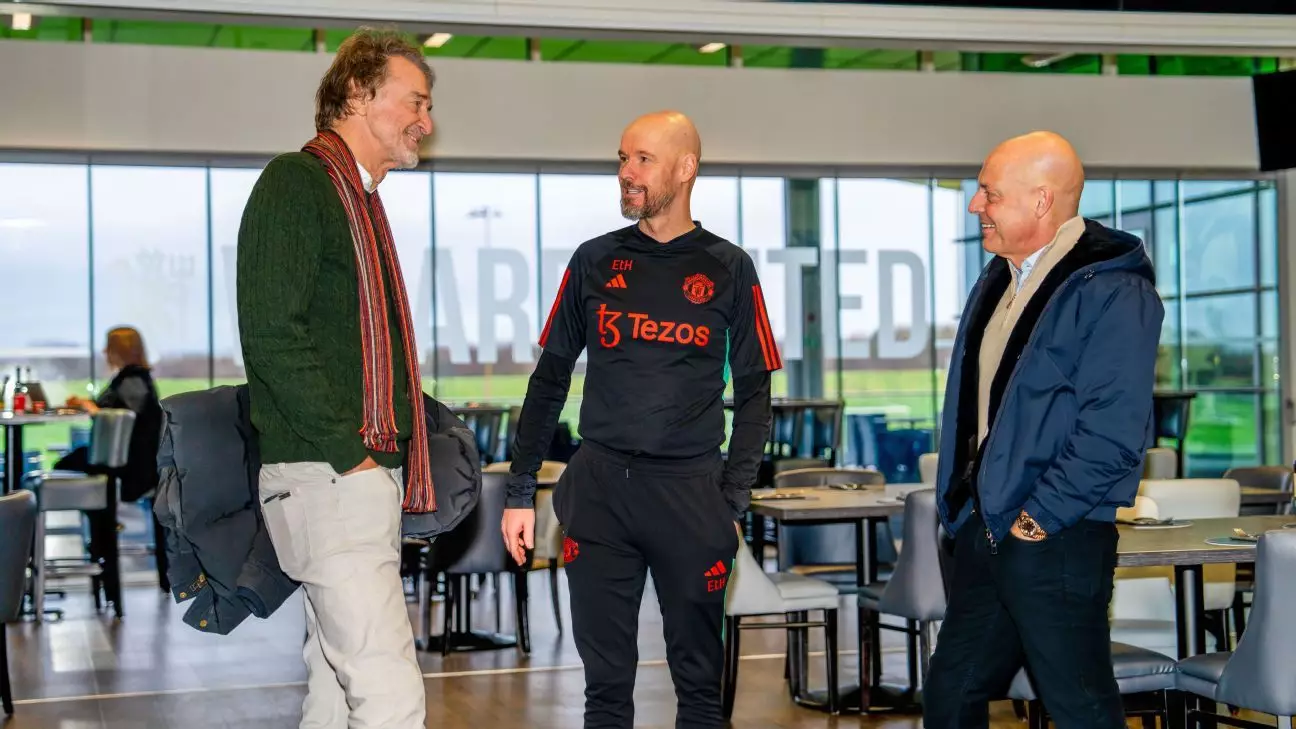Manchester United finds itself at a crossroads, with a whirlwind of changes both on and off the pitch looming ahead. The departure of CEO Richard Arnold and football director John Murtough marks the beginning of a new era at Old Trafford. The incoming replacements, Omar Berrada and Dan Ashworth, are expected to bring fresh perspectives to the table. Additionally, the appointment of Jason Wilcox as technical director signals a shift towards a more structured approach in the club’s operations. However, amidst these changes, the future of current manager Erik ten Hag hangs in the balance. Despite guiding the team to a second successive FA Cup final, his position is under scrutiny following a series of disappointing results in other competitions.
United are facing a significant overhaul of their squad, with several first-team players either set to depart or potentially on the chopping block. The need to comply with the Premier League’s profit and sustainability regulations adds another layer of complexity to the situation. The departure of key players such as Raphaël Varane and Anthony Martial will free up significant resources, but the club faces the challenge of offloading high earners to make room for new signings. The limited financial flexibility imposed by the PSR means that United will need to be strategic in their recruitment efforts. The net spend for the upcoming transfer window is likely to be capped at £100 million, putting pressure on the club to make astute decisions in the market.
The uncertainty surrounding Erik ten Hag’s future as manager adds further complexity to United’s predicament. With the squad in need of a revamp and results faltering, the decision to stick with the current manager or seek a replacement becomes a critical one. While the club’s leadership appears to be leaning towards retaining ten Hag for the time being, the pressure is on for the Dutchman to deliver positive results and secure his position. His recruitment record since joining the club in 2022 has been a mixed bag, raising questions about whether his vision aligns with the club’s long-term goals. The challenge for Ineos lies in deciding whether to back ten Hag with the signings he desires or opt for a more radical approach by starting afresh.
The arrival of Ineos as a minority stakeholder in the club represents a shift in the power dynamics at United. With Sir Jim Ratcliffe at the helm, alongside director of sport Dave Brailsford and Joel Glazer, significant decisions now pass through a new leadership group. The departure of key figures and the introduction of new faces in key positions highlight a period of transition for the club. From the boardroom to the pitch, United is undergoing a transformation that will shape the club’s trajectory in the years to come. The challenge for the new regime lies in navigating the complexities of modern football management while staying true to the club’s values and traditions.
Manchester United stands at a pivotal moment in its storied history. The confluence of managerial changes, player exodus, recruitment challenges, and leadership transition creates a landscape fraught with uncertainty and opportunity. The decisions made in the coming months will define the club’s trajectory for the foreseeable future. As fans watch with bated breath, the fate of one of football’s most iconic institutions hangs in the balance. Only time will tell if the winds of change blowing through Old Trafford will usher in a new era of glory or mark the beginning of a period of transition and upheaval.
